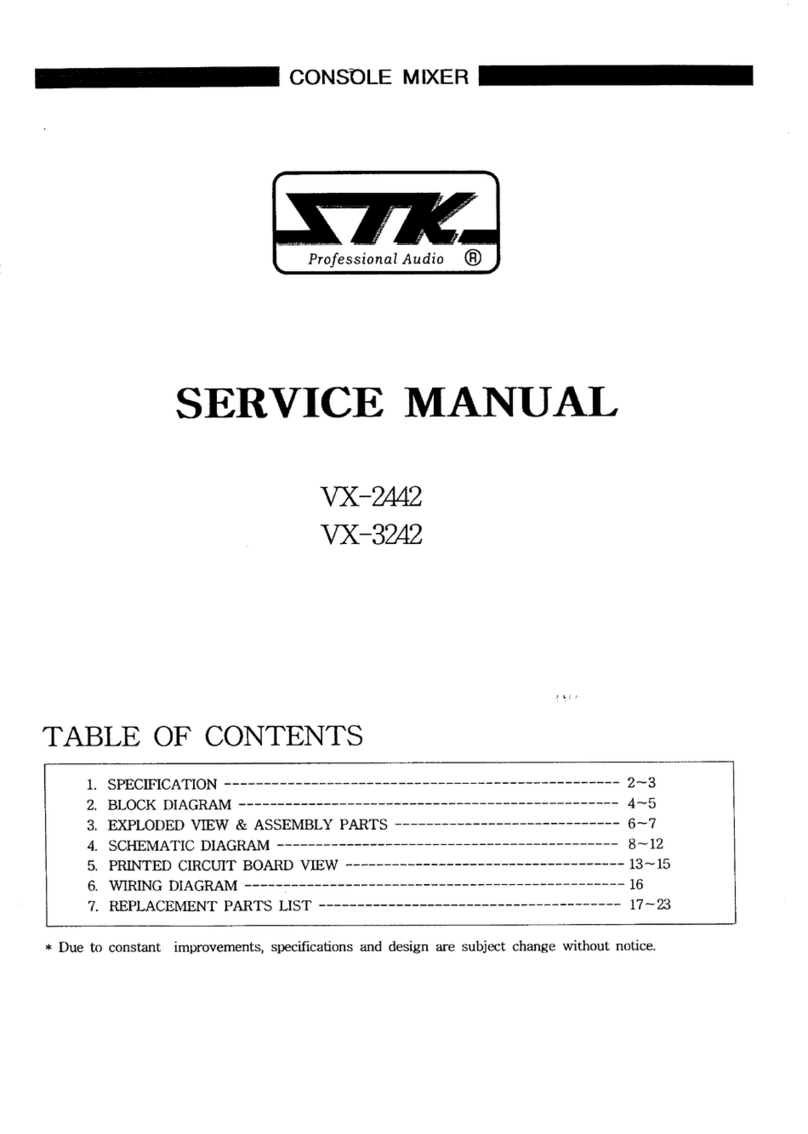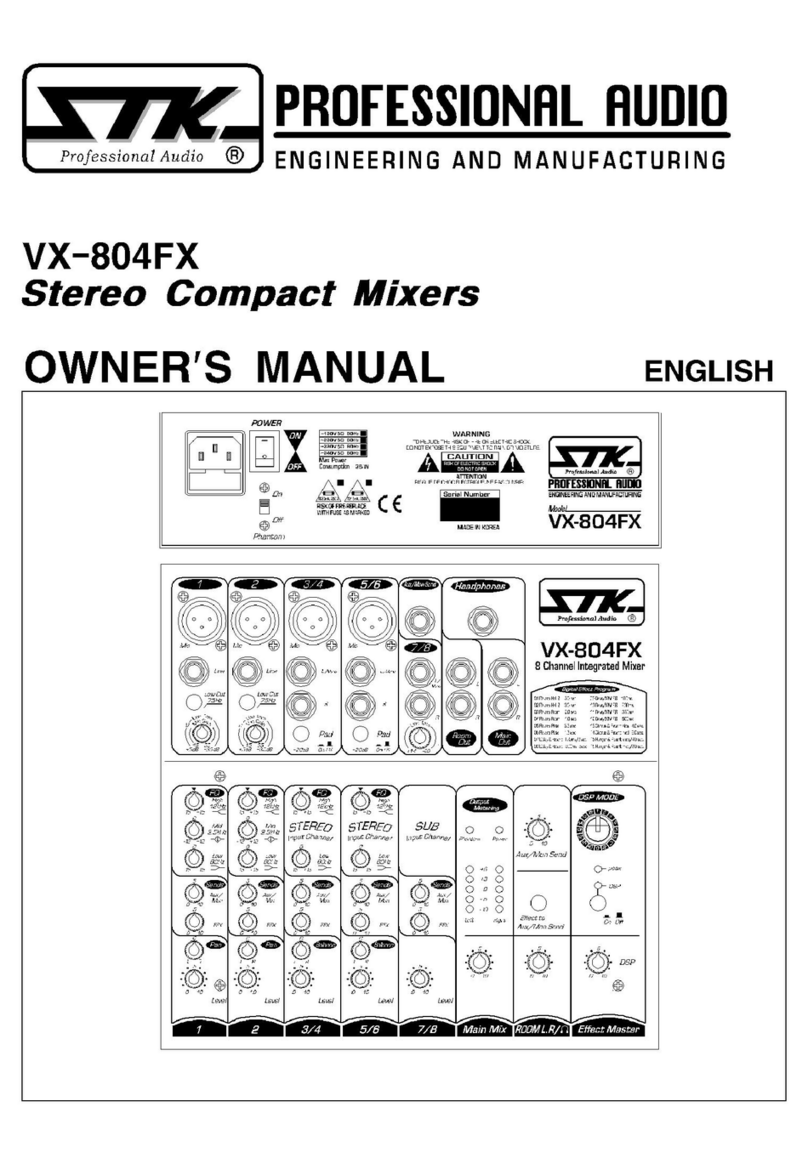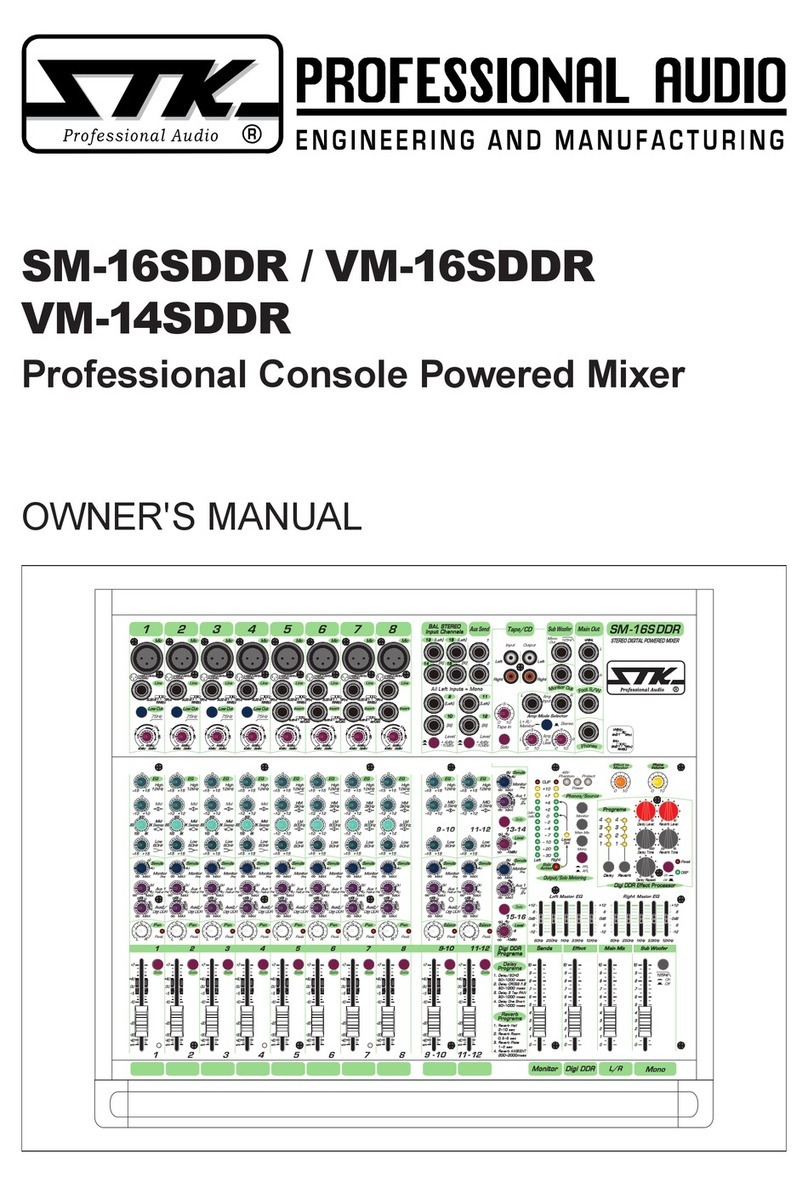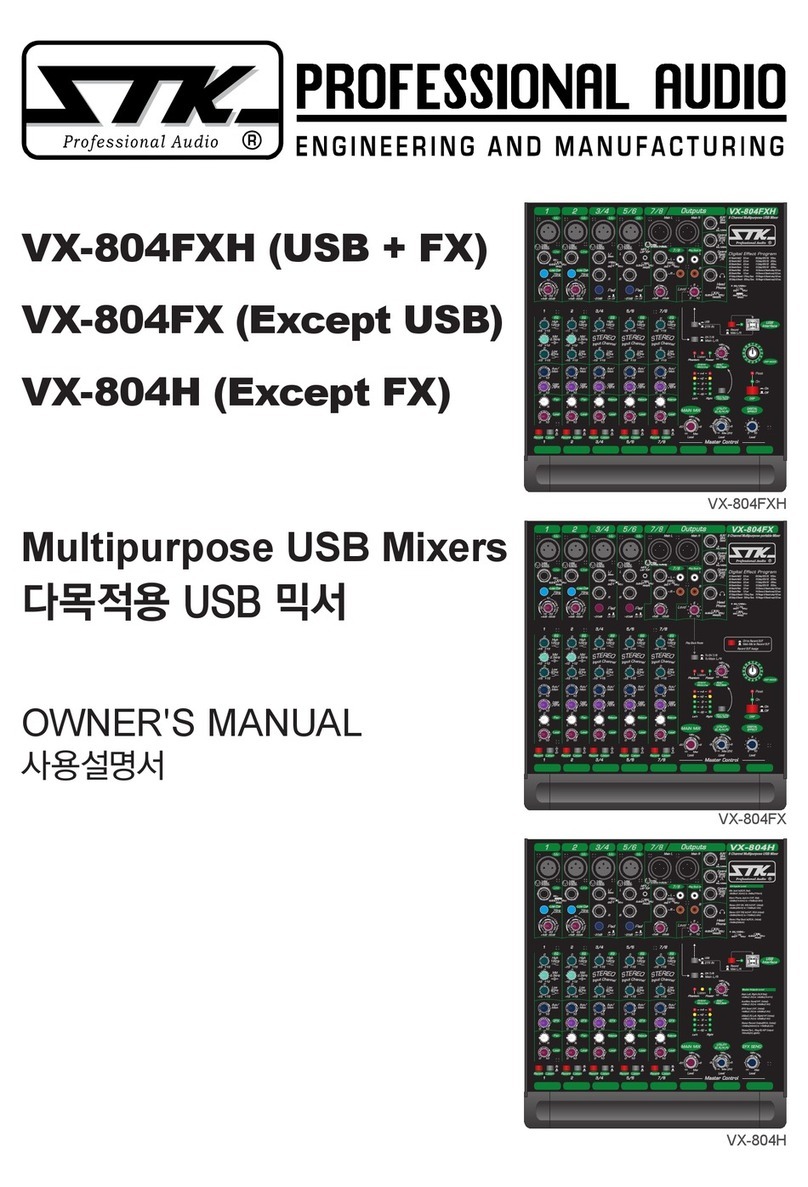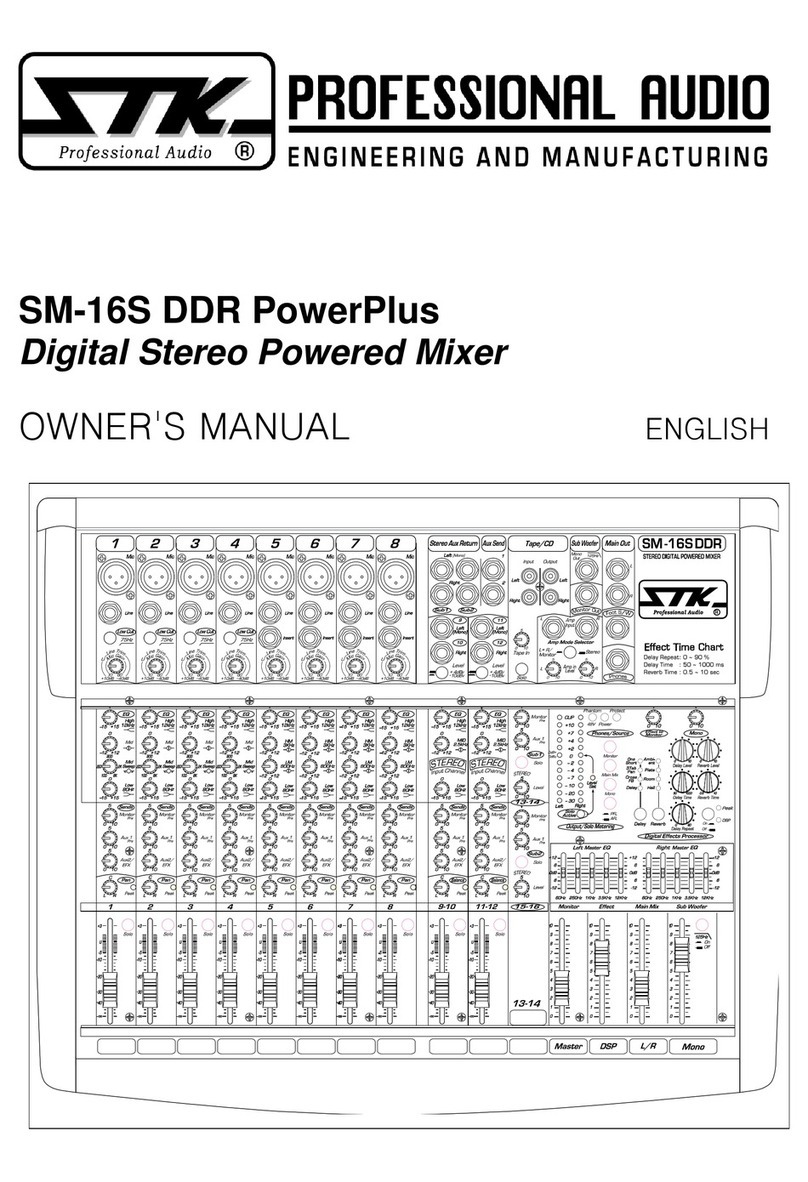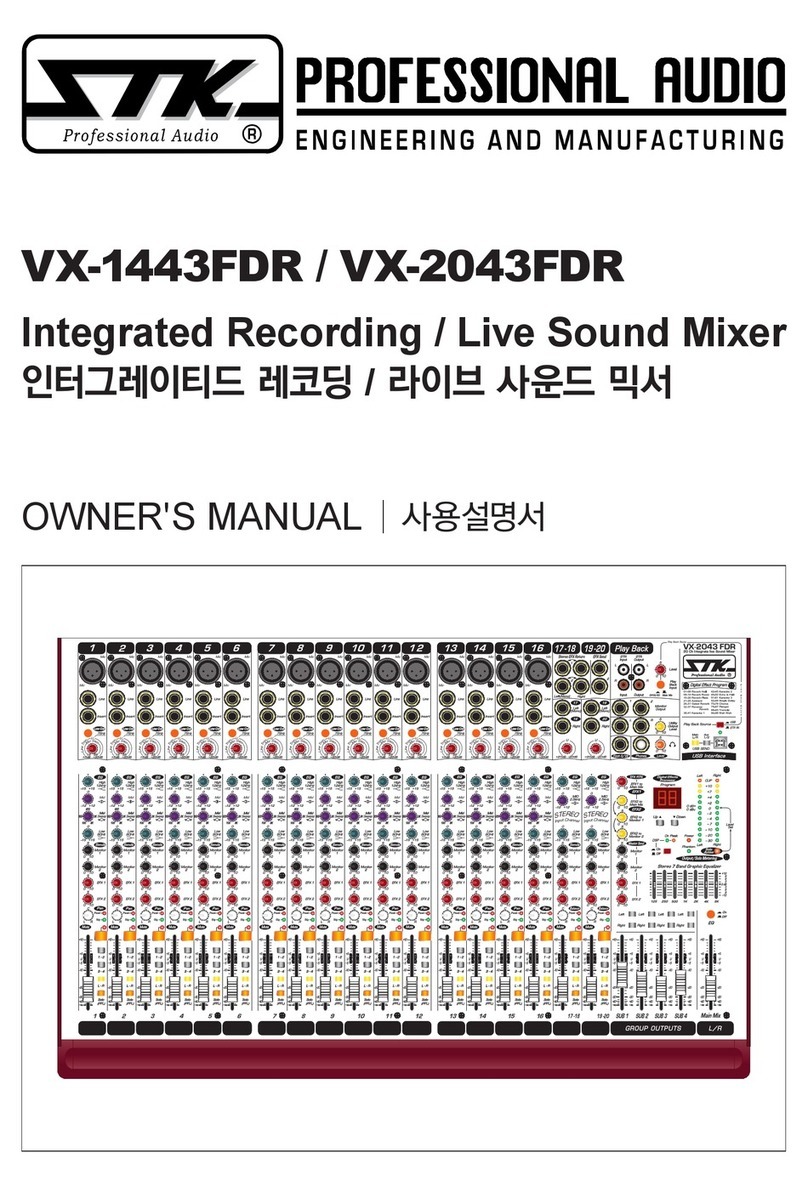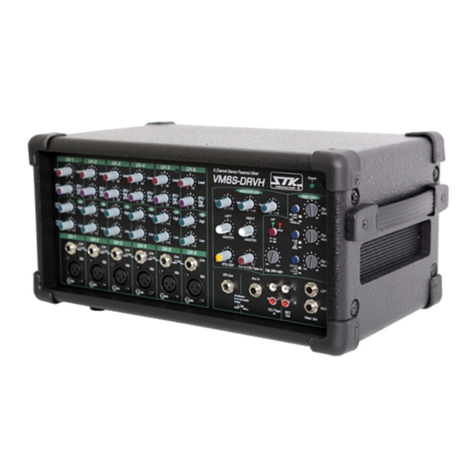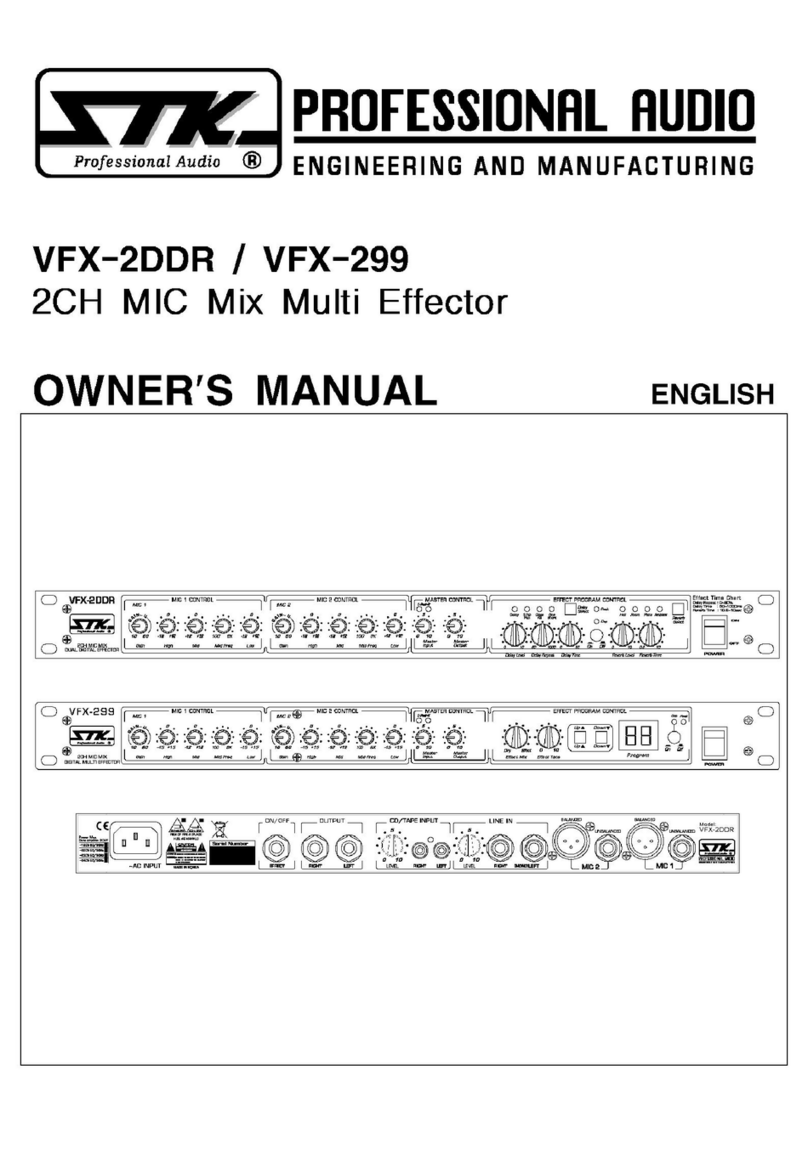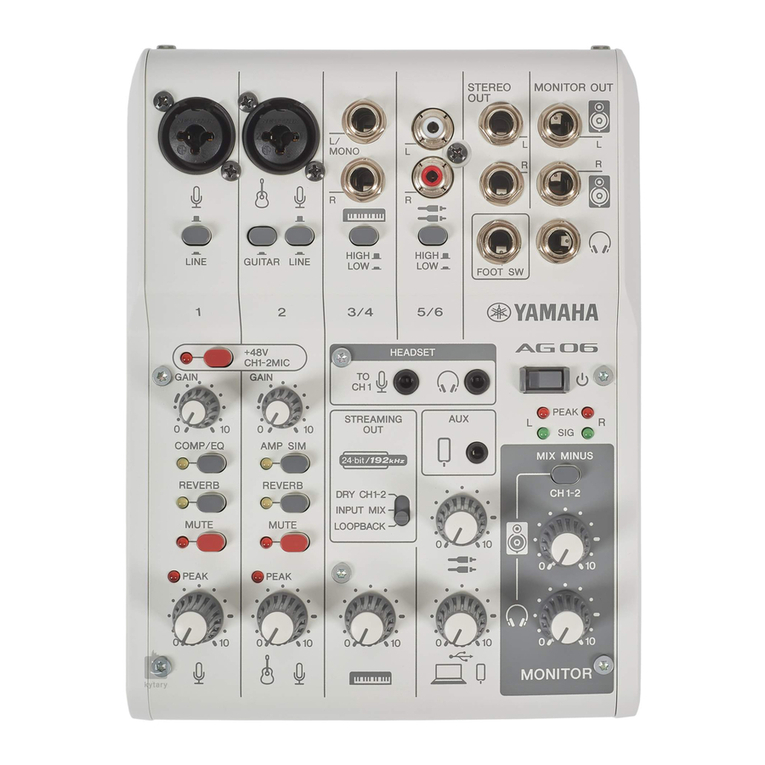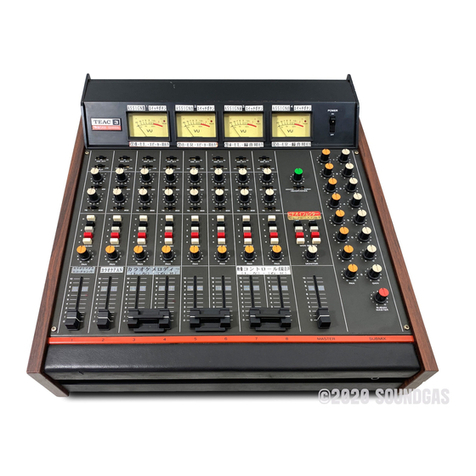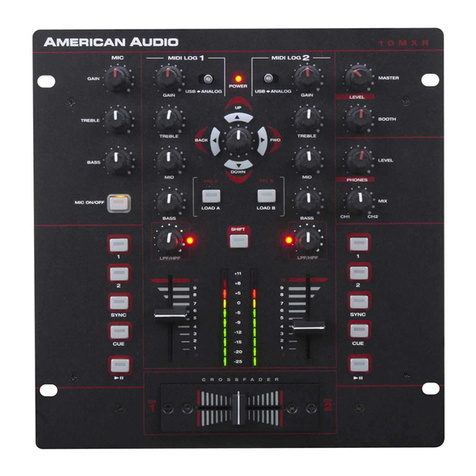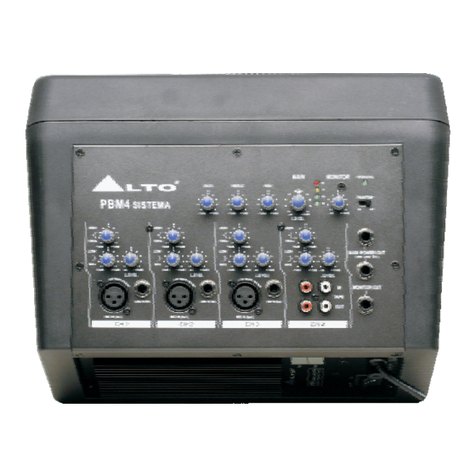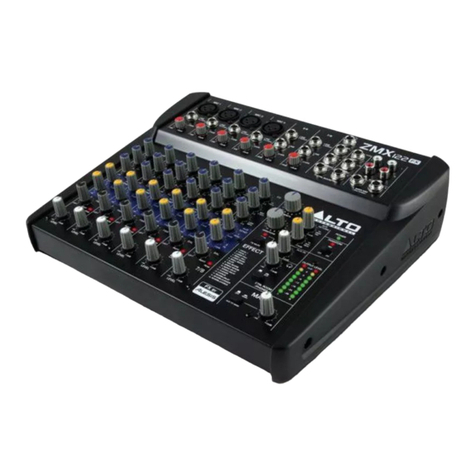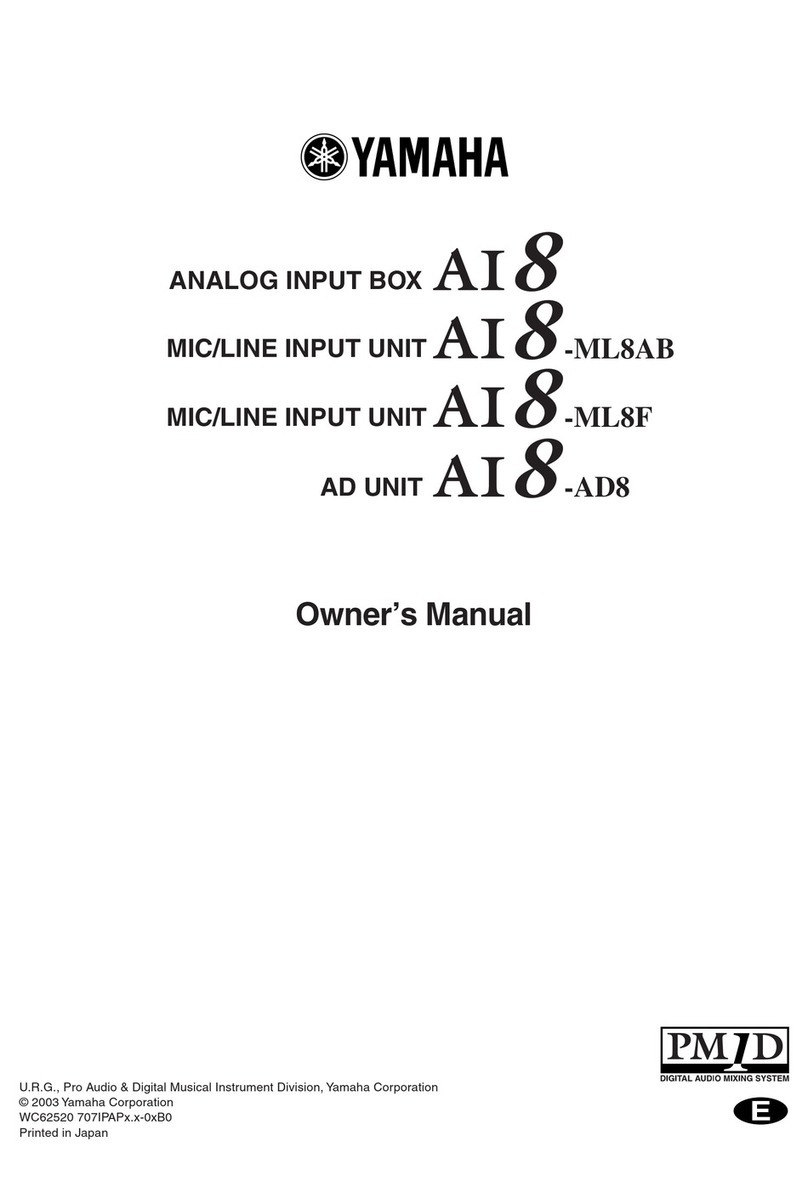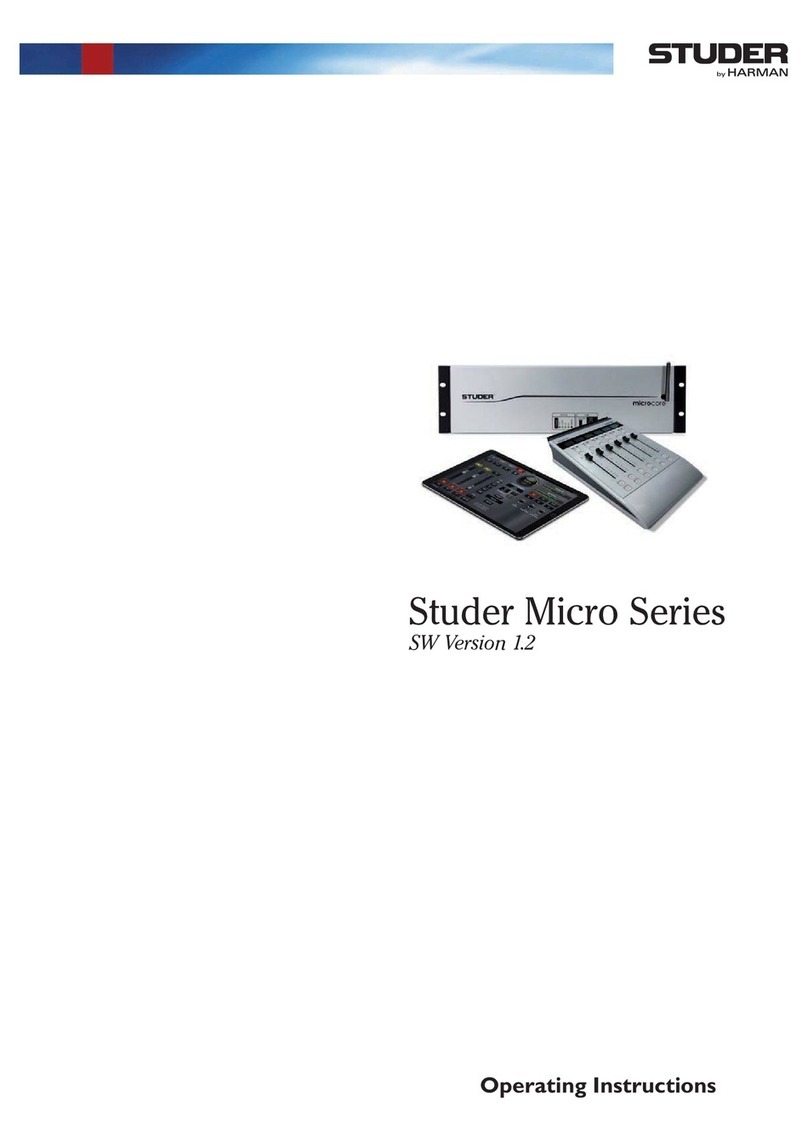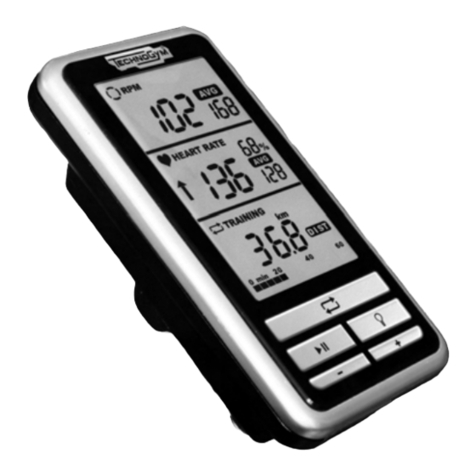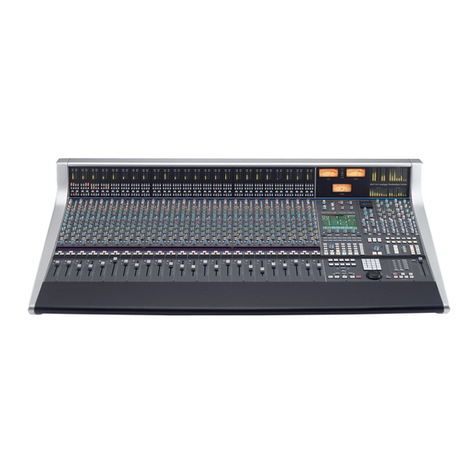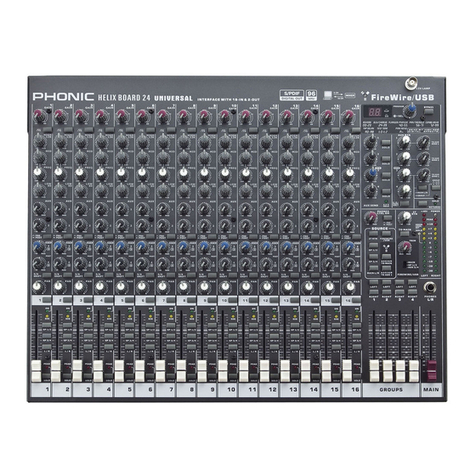SOUND REINFORCEMENT
The VX2043-FDR was definitely designed with sound
reinforcement in mind. Figured out where we came
up with the mane yet?
Here in system hookup we'll give you the basic
plan and some specific ideas for connecting the
VX2043-FDR for sound reinforcement.
Take a look at the diagrams starting on page 16.
They represent the most common "generic" typical
VX2043-FDR hook-ups.
In general, sound reinforcement connections follow
this pattern:
*Microphones, wireless mics, electronic
instruments and other sources are connected to the
Mic or Line inputs on the VX2043FDR top panel.
*Main speaker(house) amplifiers are connected to
the Left and Right Master jacks (or sometimes the
Mono Master jack).
*Monitor or other speaker amplifier inputs are
connected to Monitor Sends 1, 2.
*Reverb and delay device inputs are connected to
EFX Sends 1, 2.
*Reverb and delay device outputs are connected
to Stereo Aux Returns.
*Tape recorders are connected to the Tape In
and Tape Out jacks.
Take a little time to set everything up sensibly.
It's good to group your inputs and submix buses
by instruments, stage position or whatever else
suits you. Try to keep the drum mics next to each
other, the vocals together and so on. Label your
cables, color-code your windscreens, lay tape
(to write on) across the bottom of the faders, make
a cheat sheet, give yourself a break. It can be
confusing enough mixing a big production without
wondering which channel is which.
Frankly, it's impossible to predict, describe and
diagram all of the possible connection schemes that
are possible with the VX2043FDR. Its flexibility is
limited only by your ingenuity.
However, we've taken a stab at taking you through
a few typical set-ups: Live band set up,
Church installation and 8-Track Recording.
We also threw in dedicated monitor mixer and
audio/video configuration.
LIVE BAND SET UP
Here's the situation: you've got a four-piece band
with drums, bass, guitar and keyboards. Three of
the band members sing. They want mono mains,
two monitor feeds (the drummer has his own
wireless in-the-ear setup), a recording of the
performance and a few other tricks.
This is how we'll set it up.
(Please refer to the graphic on page 16)
There will be eight drum microphones: kick,
snare, hi-hat, three tom mics and two overheads.
We will bring the bass in on two channels: one
will be a mic on the bass amp, the other direct
injection from a direct box on the stage.
The guitar will also have two feeds: one a mic
on the amp, the other from a direct output on the
guitar amp head. Plus, the guitarist wants an
additional mic ready for his acoustic 12-string
guitar. Each of the three vocalists will have one
microphone, plus there will be a wireless mic for
the keyboardist.
The keyboards include an acoustic piano with
two mics under the lid, and a stack of synthesizers
which the keyboard player is submixing at the
stage on a VX2043-FDR. He will provide you with a
stereo line-level feed.
You've also got a stereo compressor, an outboard
parametric EQ, two digital reverb/delay effects units
and two noise gates.
The drums, bass, guitar and vocals each are
submixed. This allows you to set a good balance
between the mics and then simply move the whole
section up and down with one fader (the submix
fader). Push the L/R Assign button on each submix
strip and leave the Pan straight up.
This is a mono mix.
The keyboard inputs, which are pretty much
pre-mixed before they come to you, are assigned
directly to the left and right buses.
Carefully raise the Main Mix fader until you
have the overall level that you desire in the main
house speakers. You can now start mixing with the
channel faders and submix faders.
Use the Aux1 controls on the channel strips to
develop a mix for the stage monitor speakers.
Use the Aux2 controls for the drummer's custom
mix.
Use the EFX1 through 2 controls on the channel
strips to develop effects for both the monitors and
the main house speakers.
The Aux EFX1 feeds effects unit 1, which is
then returned to Stereo Aux Return1.
Use the effects to monitor control 1 to bring effects
to monitor 1! If you want to this same effect to the
main house speakers, you can independently adjust
the Aux Return1 control.
Use Aux EFX2 on channels 1-16 to set up
house effects mixes. These effects are
returned through stereo channels 17-20 and can be
routed to the subgroups of mains by engaging the
bus assignment switches on these channels.
You can also route these to monitor sends using
Aux1 controls on channels 17-20




















